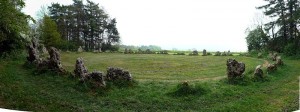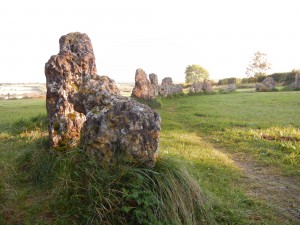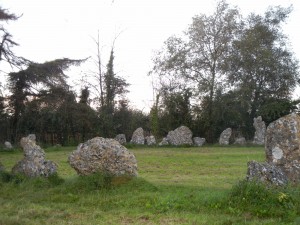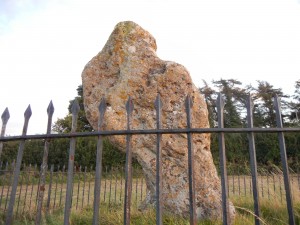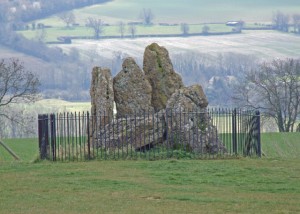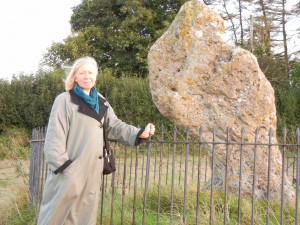She made a circuit of the clearing among the oaks, three times round and three times back, whispering spells of protection. There had been a portent in the night: a curtain of red light had shimmered and danced across the midnight sky like scarlet silk flung against the stars. Once, in the year before her birth, such a light had marked a royal death. Now it surely marked another, and although her magic could not banish death, she wove the spells to ward disaster from the realm.
Prologue, Shadow on the Crown
Several scenes in Shadow on the Crown, including the Prologue, are set in a stone circle in Oxfordshire. In the first draft of the book, the stone circle was merely a figment of my imagination, but when I was working on later drafts I decided that it was important to me that the stone circle be a real place. I began to search for one that would fit my needs, and I discovered the Rollright Stones.
It would be several years before I was able to make my way to Oxfordshire and walk among those stones, but I trusted to photographs, maps, Google Earth and my imagination to help me describe the circle fairly accurately in the book.
I finally made my little pilgrimage to the Rollright Stones last October. Trust me, they were not easy to find (although they were not nearly as hard as Ringmere, but that’s another story).
The Rollright megalithic monument consists of three elements:
a perfect circle with a diameter of 104 feet made up of about 77 stones called the King’s Men;
a single standing stone nearby known as the King Stone;
and a separate smaller group of stones (across a field) called The Whispering Knights.
Where do the names come from? There’s a legend that an enemy king and his army were making their way across the land, hoping to conquer England. They met a witch near the village of Long Compton who made this prophecy: “Seven long strides shalt thou take; if Long Compton thou can see, King of England thou shalt be.” The king tried to make the seven strides, but he was suddenly blocked by a hill that appeared in front of him. No crown for him! The witch then cast a spell that turned the king and his men – including a group off to the side who were plotting against him (some things never change) – into stones, and so the names. 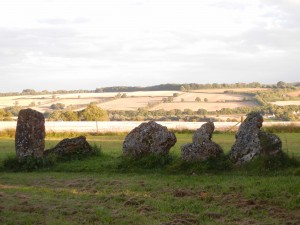 The stones date back to at least 2000 BC, and scholars believe that at one time there were as many as 105 stones that made a continuous wall except for a narrow entrance that was flanked by two portal stones standing just outside the ring. The portal faced the Midsummer moon, but I was there at sunset, not moonrise.
The stones date back to at least 2000 BC, and scholars believe that at one time there were as many as 105 stones that made a continuous wall except for a narrow entrance that was flanked by two portal stones standing just outside the ring. The portal faced the Midsummer moon, but I was there at sunset, not moonrise. 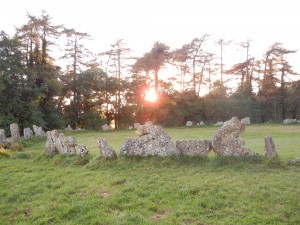 I was surprised to discover on my visit to Rollright that the circle of King’s Men is separated from the huge King Stone by a paved road – something that I suspect would not have been the case a thousand years ago, so there is no mention of it in my novel. The witch is there though, and a prophecy, and a young man who is curious to know who will be England’s next king.
I was surprised to discover on my visit to Rollright that the circle of King’s Men is separated from the huge King Stone by a paved road – something that I suspect would not have been the case a thousand years ago, so there is no mention of it in my novel. The witch is there though, and a prophecy, and a young man who is curious to know who will be England’s next king.
